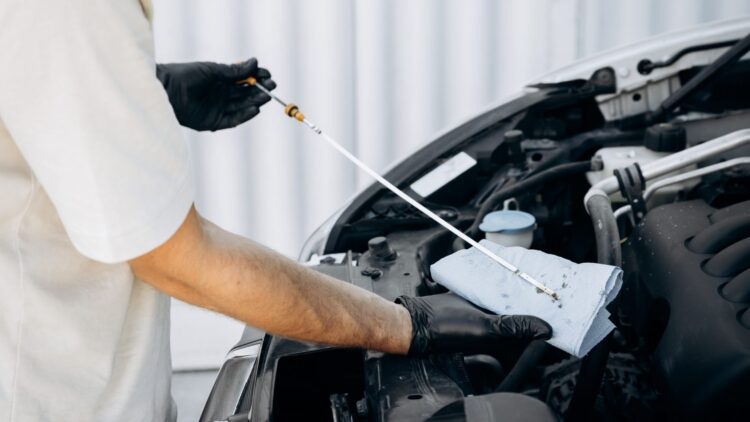Routine car maintenance is something that we should all know how to do to keep our vehicles in tip top shape, and one of the basic things that we all do (or should do) quite frequently is to check the oil in our car. This essential piece of maintenance has been standard for decades and we all know how to do it. Take the oil dipstick, clean it, re dip it and check that it reaches the line. Easy, simple and effective, just this small act can save you thousands of dollars on car repairs.
But it seems like times are changing, what used to be a quick process not taking more than a few minutes and a staple of car maintenance has been changing for a couple of years now and it is beginning to be more noticeable. How so? Well, many have noticed that some new cars do not have this handy tool to check the oil, leaving consumers a bit at a loss about what to do.
Is the oil dipstick disappearing for good?
It is not a secret that cars are becoming more technologically advanced every day and that many physical components that used to be mechanical parts are now just cables and motherboards. Somehow not many though that the time for the oil dipstick would come, or at least not so soon, but it has.
Some automakers, including BMW and Mercedes-Benz, are replacing the conventional oil dipstick with digital systems that provide precise oil level readings. Although this shift might be in line with recent trends aimed at reducing manufacturing costs or saving space, like the removal of spare tires replacing them for expansion foam, manufacturers maintain that the change is primarily driven by evolving consumer behavior and preferences.
Mercedes-Benz spokesperson Andrew Brudnicki stated in an interview with Automotive News Canada in 2024 “With digital oil level measurement, customers can easily monitor their vehicle’s oil level in their vehicle’s driver display and receive timely alerts if oil level is outside normal limits. This proactive approach helps to avert potential engine damage.”
Of course the new method is comprehensive, while the old oil dipstick just told you if the level was correct or not, it did not give drivers an estimate on how much oil would be needed to fill up again to the line, leaving you to guesstimate the amount needed to solve the shortage. The new electronic method does not leave anyone guessing, as it gives drivers an exact amount of how much oil to add taking out the guesswork.
While the solution seems great for those who are not really into cars, those that identify as car enthusiasts are not nearly as pleased with this new change. Given that they have complained about every single electronic change that cars have made in the past couple of decades, it seems easy to dismiss this new complaint as just another senseless gripe, but they might have a point.
Peter Nelson from The Drive shared his experience with the oil monitoring system in a 2021 Toyota GR Supra 3.0, noting that it left much to be desired in terms of clarity and reliability. He observed that after adding just over the minimum required amount, the system reported a significantly higher oil level than expected. He also pointed out the inconvenience of having to wait for the vehicle to complete its oil check, which he felt could unnecessarily delay travel.
While his complaint seems nitpicky and oddly specific, the reality is that those who known nothing about cars would find this even more frustrating as they would not be able to fall back on the know-how to solve the issue, having to go to a mechanic shop to get it checked for no reason.
Then, there is the habitual sensor problem. Sensors are one of the first pieces to fail in modern cars, especially those exposed to engine oil and extreme heat on a regular basis, like the oil sensor, which means that they would not provide accurate readings and would have to be replaced frequently at a high cost. While the sensor is a good idea on principle, it might be best to still have the dipstick to ensure that there is no trouble.

